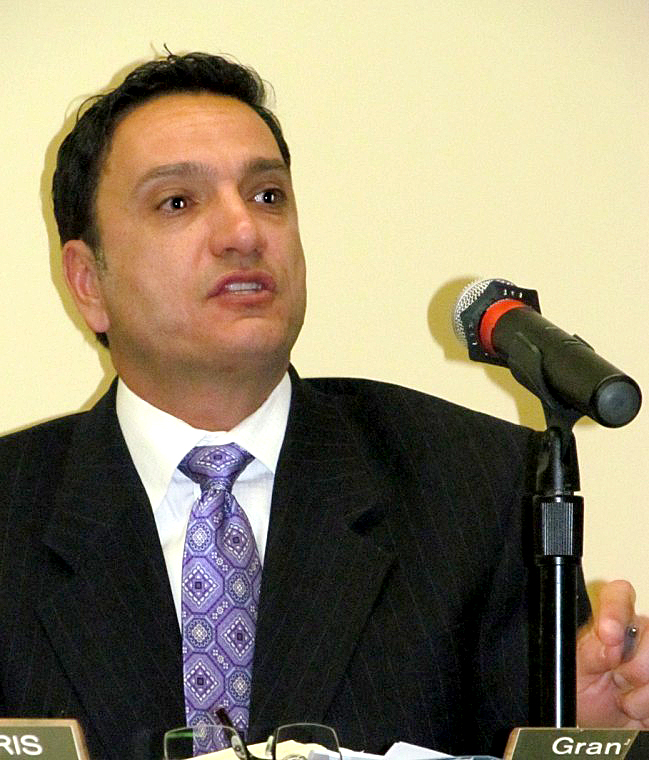School tax rates on the North Shore are far outpacing the tax levy increases approved by districts, prompting a back-and-forth between County Executive Edward Mangano and school administrators over who is responsible for the sticker shock faced by local homeowners.
While no school district in North Hempstead raised its tax levy – the total dollar amount raised by property taxes – by more than 4 percent, the rates paid by owners increased sharply, topping out at a 9.62 percent jump in Great Neck.
The reason for the difference, according to school officials, is a county assessment system that encourages homeowners to contest their home valuations – a practice that causes a rate spike to make up for the smaller tax base.
“’Sticker shock’, the result of the increase in tax rates compared to tax levies, is the responsibility of the Nassau County Assessor,” wrote Herricks Board of Education President James Gounaris in a letter to the editor published this week. “If any homeowner has a school tax bill increase greater than the increase in the tax levy proposed by our district, we have urged them to call and speak with the county assessor immediately to find out how that happened!”
But Mangano placed responsibility for the jump on districts, describing tax grievances as a right of homeowners and calling out schools for “spending too much and taxing too high.”
“I understand that there is a number of mitigating financial factors that can negatively impact a school district’s budget,” wrote Mangano. “What cannot be ignored are the facts that school district spending goes up every year, which accounts for over 67 percent of a homeowner’s average tax bill, and it is that spending that has drained the wallets of our over-taxed and frustrated homeowners.”
In North Shore districts, the numbers show a sharp divide between tax levy and tax rate increases.
Great Neck, Herricks, Roslyn, East Williston, Mineola and New Hyde Park/Garden City Park all stayed within the state mandated tax cap, raising their levies between 2.11 percent and 3.22 percent. But the rates paid by homeowners jumped 9.62 percent in Great Neck, 8.41 percent in Roslyn, 7.12 percent in Herricks, 7.27 percent in New Hyde Park/Garden City Park, 6.12 percent in Mineola and 6.87 percent in East Williston.
And Manhasset, which exceeded its tax cap, raised its levy 1.97 percent while seeing rates increase 4.52 percent.
The disparity, according to district officials, is due to the zero-sum nature of the tax-grievance system, where a successful assessment challenge by one property owner means others must make up for the lost tax revenue.
Nassau County approved 87 percent of tax grievances last year, and the Mangano administration has touted its policy of settling nearly all residential tax grievance claims as a way of avoiding the ongoing liabilities that have left the county with over $300 million in unpaid tax refunds on its books.
When school districts set tax levels, they decide on an overall dollar amount, meaning that the 2.66 to 4.65 percent drops in overall assessed values in North Shore districts caused a jump in rates to make up for the revenue lost in settling tax claims.
Great Neck Assistant Superintendent for Business John Powell said the district could only be held responsible for a fraction of the increase, with the lion’s share of the 9.62 percent rate jump due to reduced assessments and a shift in tax burden from commercial, utility and apartment property to private homeowners.
“Of the three components of a tax rate, only one of them is the responsibility of the district, which is the levy,” Powell said.
Mangano’s election opponent, former County Executive Tom Suozzi, (D-Glen Cove), has made the school tax rates a staple of his campaign messaging, blaming Mangano for an assessment system that Suozzi says benefits homeowners who grieve their taxes at the expense of their neighbors who do not.
But according to Mangano, the criticism of tax grievances is misplaced and the final responsibility for school taxes rests with the districts and their budgets.
“I find it a bit disconcerting that some politicians attempt to blame me for the school property tax increases that result because a homeowner exercises his or her right to challenge an assessment or to file for a property tax exemption,” Mangano said. “It seems that if it were up to them, even the victims of Hurricane Sandy should not benefit from having a lower assessment or paying lower property taxes.”
Suozzi has described school tax rates as an ongoing concern, saying that between this and last year’s jumps and average homeowner has seen rates increase by nearly 20 percent.
School officials from North Shore districts have piled on the criticism as well.
“The difference is the responsibility of the Nassau County Assessor’s office, which has sole responsibility for any difference between the tax levy and the tax rate,” wrote the Roslyn School District in a statement on its Web site.
And the Manhasset Board of Education said it had decreased spending by 1 percent in its 2013-2014 budget, with a 19.7 percent increase in the tax levy to cover shortfalls from other revenue sources.
“If Manhasset voters approved a tax levy increase of 1.97 percent, why then are Manhasset homeowners seeing their tax bills increase more than that 1.97%?,” wrote the board in a statement. “That answer lies with the Nassau County Assessor who is responsible for allocating Manhasset’s total tax levy of $79,341,951 among each of the property taxpayers in the district: individual homeowners, businesses, condominiums and utilities.
Jacqueline Fitzpatrick Pirro, East Williston Assistant Superintendent for Business, echoed her neighboring administrators, describing the tax rate as out of the district’s hands.
The only thing we can do is focus on energies on keeping our control of the costs low
We really cannot control how the county assesses the property,” Pirro said. “At times it’s very frustrating. But we’re very clear on where the tax levy comes from.”



